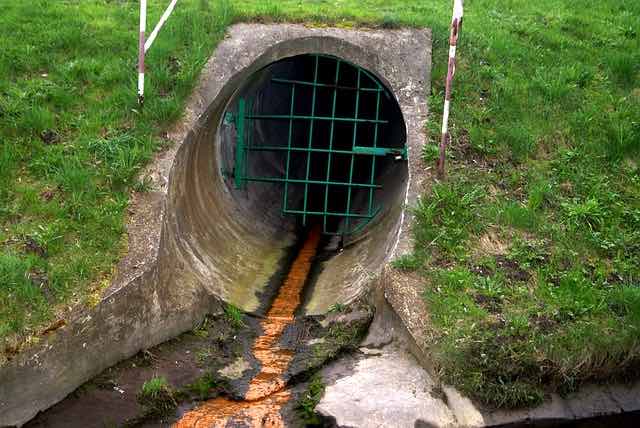
..................................................................................................................................................................
Chemical
Characteristics of Sewage
BOD, COD,
Nutrients, DO
By: Haseeb Jamal
Sewerage
characteristics can be divided into three broad categories:
· Physical (Temperature,
colour, smell, solids)
· Chemical (BOD, COD, Nutrients and dissolved solids; and
·
Biological
Chemical Characteristics of Sewage (Waste Water)
· In sanitary sewage about 75 % of suspended solids and 40% of
filterable solids are organic.
· These solids are derived from both animals, plant and humans.
Organic compounds usually consist of C; H; O; N along with S; P and Iron.
· The organic substances found in sewage are Protein (40-60%);
Carbohydrates (25-50%), fats and oils (10%).
· Along with these organic compounds small amount of synthetic
organic compounds like VOCs, pesticides, insecticides, Organic Priority
Pollutants are also present in sewage.
· Sewage also contain inorganic substances.
· Tests like BOD, COD, Nitrogen, phosphorus, alkalinity etc. give
the chemical characteristics of sewage.
BOD (Biochemical Oxygen Demand):
When biodegradable
organic matter is released into a water body, microorganisms feed on the
wastes, breaking them into simpler organic and inorganic substances.
When this
decomposition occurs in aerobic environment the process
produces non-objectionable, stable end products like CO2, SO4,
PO4 and NO3.
A simplified form
of Aerobic decomposition is
O.M + O2 +
Microorganisms
CO2 +
H2O + C5 H7 NO2 (New
Cells) = stable products like NO3; PO4; NO3)
When sufficient O2 is
not available Anaerobic decomposition occurs by different microorganisms.
They produce end
products that can be highly objectionable, including H2S; NH3 and CH4.
The reaction is O.M
+ Microorganisms
CO2 +
H2O + C5 H7 NO2 (New
Cells) = Unstable products (NH3; H2S; CH4
· Such products are usually unstable.
· Bacteria placed in contact with organic matter will utilize it
as food source.
· In the utilization of the organic material it will eventually be
oxidized to stable end products such as CO2 and H2O
etc.
· The amount of oxygen required by the bacteria to oxidize the
organic matter present in sewage to stable end products is known as biochemical
oxygen demand.
· BODu is the maximum amount of oxygen usage by
microorganisms over a long period of time. A good measure of maximum
bioavailability.
· BOD5 is the amount of oxygen consumed (in mg/L)
over a 5-day period at 20 oC (in the dark). BOD5 is
a measure of the bioavailability over a 5-day period under controlled
conditions.
Carbonaceous
biochemical oxygen demand or CBOD is a method defined test measured by the
depletion of dissolved oxygen by biological organisms in a body of water in
which the contribution from nitrogenous bacteria has been suppressed.
CBOD is a method
defined parameter is widely used as an indication of the pollutant removal from
wastewater. It is listed as a conventional pollutant in the U.S. Clean Water
Act.
Chemical Oxygen Demand
· In addition to CBOD and NBOD measured, there are two other
indicators to describe the oxygen demands of wastewater. They are Chemical
oxygen demand and theoretical oxygen demand.
· The biodegradable organic matters are degraded completely by
microorganisms either by CBOD or NBOD.
· There are some organic matters like cellulose, phenols, benzene
and tannic acid which are resistant to biodegradation. Similarly, other organic
matters like pesticides, insecticides and various industrial chemicals are non-biodegradable
and they are toxic to microorganisms.
· The COD is a measured quantity that does not depend on
microorganisms. To calculate the concentration of oxygen for non-biodegradable
materials a strong oxidizing agent known as potassium dichromate will be used.
· The reaction is Organic matter (CaHbOc)
+ Cr2O7-2+ H2O –à Cr +3 + CO2 + H2O
· The COD test is much quicker than BOD test, but it does not
distinguish between the biodegradable and non-biodegradable organic matter.
The measured COD is
usually more than BOD if there is non-biodegradable impurity present. If all
are the biodegradable organic matter, then COD remains the same as that of BOD.
Roughly the BOD/COD is 0.4 to 0.8.
Theoretical Oxygen Demand (TheoD):
Organic matter of
animal or vegetable origin in wastewater is generally a combination of carbon,
hydrogen, oxygen, nitrogen and other elements.
If the chemical
composition of an organic matter is known then the amount of oxygen required to
oxidize it to carbon dioxide and water can be calculated using stoichiometry.
This amount of
oxygen is known as Theoretical Oxygen Demand.
If that oxidation
is carried out by bacteria then it is BOD, if by chemical process then it is COD.
If a combination of both then it is TheoD.
Haseeb
Jamal.
I am a Civil Engineer, graduated from University
of Engineering and Technology, Peshawar, Pakistan in 2010. I also
have a PG-Diploma in Disaster Management and
MS in Urban
Infrastructure Engineering (In Progress). My expertise include civil
related softwares like AutoCAD,
SAP2000, MS Project, Primavera, MS Office and GIS. My technical skills include
project management, monitoring and evaluation, structural assessment, disaster
risk management, Quantity survey, land survey, material testing, site
management and technical writing. I am trained in writing project progress
reports as well as proposals and concept papers. I have also received advanced
training on surveying, proposal writing, Monitoring and Evaluation of projects
as well as organizations.
I have
worked as Project Engineer at National Research and Development
Foundation, Peshawar and CENCON Associates. I also worked with Spectra
Engineering Solutions as Senior Civil Engineer in monitoring of World
Bank and UNDP funded projects all over Khyber Pakhtunkhwa and FATA. Currently,
I am working as Deputy Manager Development at NayaTel, Peshawar.


No comments:
Post a Comment